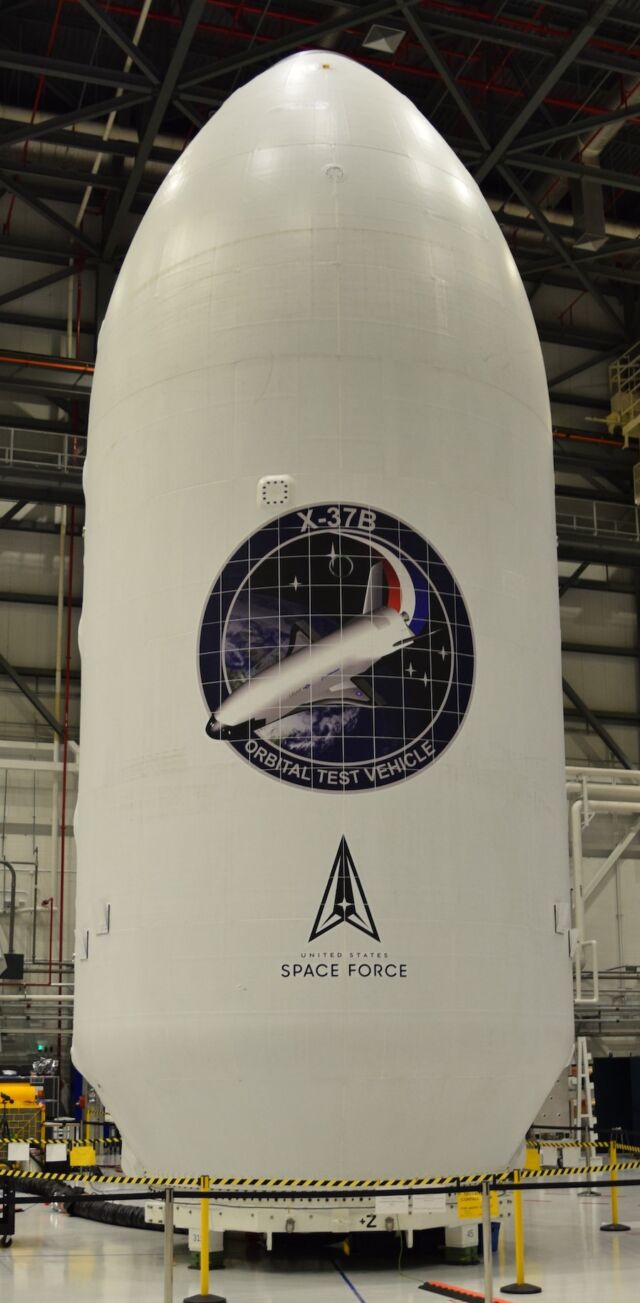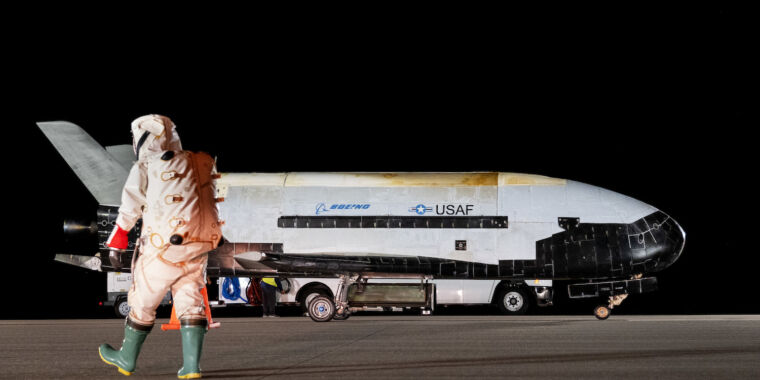The US military’s reusable X-37B spaceplane will launch on the next flight of SpaceX’s Falcon Heavy rocket, scheduled for December 7, officials announced on Wednesday.
This was unexpected because the spaceplane’s six previous missions launched on medium-lift Atlas V or Falcon 9 rockets. This next mission, the seventh by an X-37B spaceplane, will fly on a heavy-lift launcher for the first time.
The payload for the next Falcon Heavy rocket was a secret before the military’s announcement on Wednesday. The mission was known simply by the designation USSF-52, and it will take off from NASA’s Kennedy Space Center in Florida.
In a statement, the Space Force said the seventh X-37B mission will have a “wide range of test and experimentation objectives.” The Pentagon wants everyone to know the X-37B spaceplane exists, but military officials are mum about the details of the vehicle’s missions. The Space Force’s statement Wednesday was similarly vague on details of the upcoming flight.
“These tests include operating the reusable spaceplane in new orbital regimes, experimenting with future space domain awareness technologies, and investigating the radiation effects on materials provided by NASA,” the Space Force said.
Shrouded in secrecy, the automated X-37B spaceplane can deploy small satellites, host experiments, and pursue other classified objectives. Flying without any astronauts on board, the vehicle generates electricity with a solar array and autonomously guides itself to a runway landing at the end of each mission.
Expanding the envelope
The X-37B program is a partnership between the Space Force and the Air Force Rapid Capabilities Office. Military officials have acknowledged there are two X-37B vehicles built by Boeing, and each has flown multiple times.
The spaceplane measures about 29 feet (8.9 meters) long with a wingspan just shy of 15 feet (4.5 meters), about one-quarter the size of one of NASA’s space shuttle orbiters. It has a cargo bay inside the fuselage for payloads, plus a disposable service module that was flown for the first time on the most recent X-37B mission, providing additional capacity for experiments.
The spaceplane fits snugly within the nose cone of a Falcon or Atlas rocket, allowing the X-37B to take off on top of a conventional launch vehicle just like any other satellite payload.
https://www.spaceforce.mil/News/Article-Display/Article/3583347/department-of-the-air-force-scheduled-to-launch-seventh-x-37b-mission/
.
The X-37B flew into orbit for the first time in 2010. Its most recent flight ended a year ago this week with a return to NASA’s old space shuttle landing strip in Florida, wrapping up nearly 30 months in orbit, the longest X-37B flight to date. All of those missions flew a few hundred miles above Earth in mid-inclination orbits, following paths that took the vehicles between about 55 degrees north and south latitude on each lap around the planet.
Next month’s launch will “expand the envelope” of the X-37B’s capabilities and will again fly with a service module mounted to the rear of the spaceplane, said Lt. Col. Joseph Fritschen, the X-37B program director. He said in a statement that the X-37B will fly “multiple cutting-edge experiments for the Department of the Air Force and its partners.”



